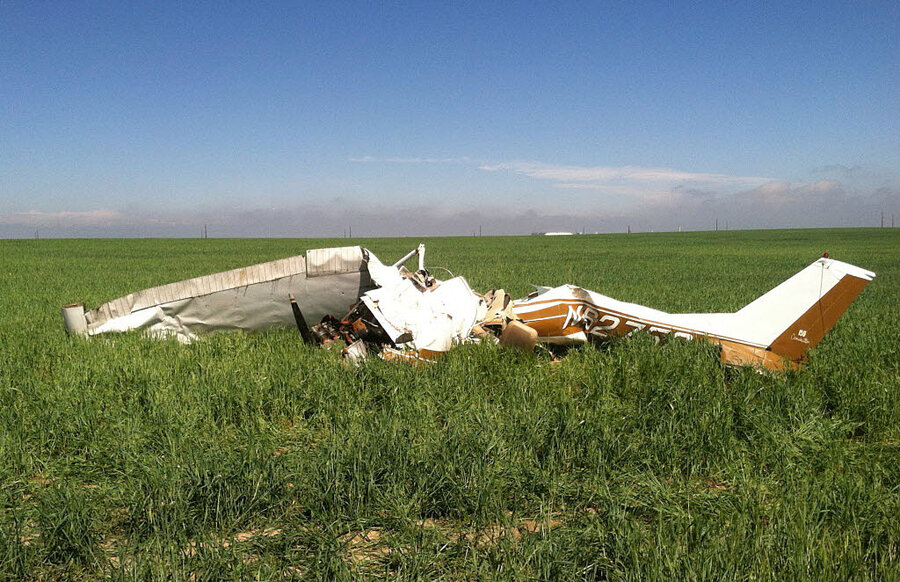Distracted in the cockpit: taking selfies likely caused fatal plane crash
Loading...
The National Transportation Safety Board (NTSB) has been investigating why a small Cessna 150K plane crashed last May into a wheat field near Watkins, Colo., killing the pilot and his passenger. Now, a recently released report has revealed that Amritpal Singh probably lost control of the plane while taking selfie pictures with his cellphone.
While much attention has been given to the use of cellphones while driving cars, this latest case demonstrates the risks of operating any machinery while texting, taking photographs, or posting photos to social media.
"Contributing to the accident was the pilot's distraction due to his cellphone use while maneuvering at low altitude," the NTSB stated in a report issued last week, according to Reuters.
After discovering an undamaged GoPro video camera close to the plane’s wreckage, investigators used its data card to learn more about what took place in the moments leading up to the crash. Video footage from the camera showed that the pilot had taken several passengers on rides in his one-passenger plane over the course of the day, and one nighttime flight shortly before the accident.
While the video camera did not capture Mr. Singh’s final flight, investigators say the footage from other flights provides clues at to what happened that night. During many of the flights, Singh took pictures of himself with his cellphone. Investigators say that the activation of the camera’s flash is likely to have disoriented the pilot, making him lose control of the plane.
"During the climb-out portion of flight, the pilot uses his cellphone to take a self photograph. The camera's flash was activated and illuminated the cockpit area,” the NTSB report states.
After the age of the selfie exploded in the early 2010s, so did the number of selfie-related accidents.
Last April, a woman died in a head-on collision on Interstate 85 in North Carolina just seconds after she updated her Facebook status with selfies she had taken while driving. A police department spokesman told local WGHP-TV that the crash was a real-life public-service announcement “showing what happens when you text and drive.”
According to government statistics, approximately 660,000 drivers in the United States are using cellphones or manipulating electronic devices while driving at any given time. In 2012, the last year for which data are available, an estimated 421,000 people were injured in motor vehicle crashes involving a distracted driver, and 3,328 were killed.
In the case of Singh, texting may also have contributed to his distraction.
"During the climb-out phase, the pilot was seen making keyboard entries to his cell phone and additional keyboard entries on a portion of flight consistent with the downwind leg,” the NTSB report states.
The Cessna 150 is a two-seat general-aviation airplane that is meant for flight training, touring, and personal use. Singh did not have the certification to operate the plane at night with a passenger, the NTSB said. According to the agency's report, the plane did not have any defects that could have been a cause of the accident.








